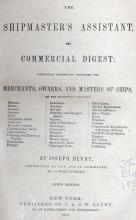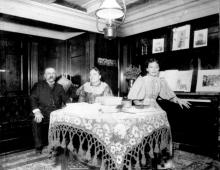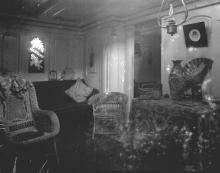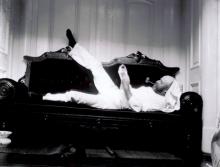The Captain
The captainCaptain
The chief officer in charge of all aspects of a vessel. Also known as the master. was final decision-maker, navigator, businessman, administrator, disciplinarian, and doctor. A ship was not a democracy, and the captain’s word was law. A captain could be a kind father figure or a strict authoritarian.
A captain’s first responsibility was to the ship’s owners. In order to provide incentive, nineteenth- century ship owners expected the captain to purchase at least a one-eighth shareShare
A percentage of ownership. In the days of the Down Easter, ships were owned in sixty-fourths. of the ship. This was worth a few thousand dollars in a time when a big house was valued at $4,000.
His second responsibility was to the cargo. If the captain lost some of the cargo, he had to submit a protestProtest
A declaration made by the master of a vessel before an official, in cases of damage to the cargo. The protest might be required by insurance underwriters in the event of a claim. to prove he had done everything possible to save it.
His final responsibility was to the crew.
How did you become a captain? During the days of sail, most Maine-built sailing ships had owners from the towns where they were built. The owners often chose as captain someone they knew from their community whom they could trust as a sailor, a businessman, and a leader. Between 1800 and 1950, Searsport was home to 548 sea captains, and many were related to ship owners.
Because of the strong connection between the Bay’s economy and maritime transport, many people in the Penobscot Bay area went to sea. In 1850, one out of every four males in Searsport was a mariner. Mariners progressed from boy or seaman, to second mate, then mate, and finally captain. Young men often moved up more quickly if their father was a captain or if they married the daughter of a captain.
By the late nineteenth century, the captain’s quarters, aftAft
Towards the stern, or rear, of a vessel. in the ship, usually included a few rooms: a saloon for eating and relaxation, a cabin for sleeping, and an office. On larger ships, there were additional cabins, which made it possible for the captain’s family to sail with him.
A Down Easter captain had large and comfortable quarters, including a pleasant living room space and sometimes a piano or pump organ. Cabins were often lavishly furnished in true Victorian style, though the family’s best possessions might be displayed only while the ship was in port.




